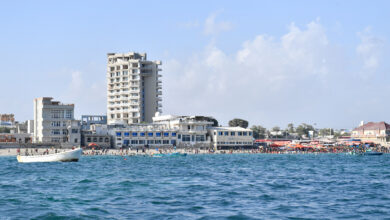Smart City LA 2028 How Los Angeles Is Transforming for the Olympics and the Future

As the countdown to the 2028 Summer Olympics begins, Los Angeles is undergoing a massive transformation—one that goes far beyond just sports venues. The city is evolving into a futuristic metropolis under the umbrella of a “smart city” initiative: Smart City LA 2028. This ambitious program aims to modernize LA through cutting-edge technology, sustainable infrastructure, and digital inclusion, all timed perfectly for its global Olympic spotlight.
In this in-depth guide, we explore what “Smart City LA 2028” means, what technologies and developments are being implemented, how it affects daily life for residents, and what the long-term vision looks like after the Olympic flame is extinguished. Whether you’re a local, investor, technologist, or visitor, this article will give you a comprehensive understanding of LA’s smart city future.
Table of Contents
- Introduction to Smart Cities
- The Vision Behind Smart City LA 2028
- Infrastructure Upgrades: Roads, Transit, and Venues
- Digital Technology in Urban Planning
- Sustainable Development and Green Projects
- Mobility and Smart Transportation
- Security and Surveillance Enhancements
- Smart Housing and Urban Living
- Citizen Engagement and Digital Inclusion
- Public-Private Partnerships
- Economic and Job Impact
- Challenges and Criticism
- Post-Olympics Sustainability
- Conclusion: The Legacy of Smart City LA 2028
Introduction to Smart Cities
A smart city uses technology and data to enhance the quality of life for its citizens. This includes everything from real-time traffic systems to energy-efficient buildings and digitally connected public services.
Smart cities aim to:
- Improve public safety
- Enhance transportation
- Reduce environmental impact
- Promote digital inclusivity
- Support economic development
Los Angeles has committed to joining the ranks of global smart cities, positioning itself as a pioneer in the U.S. as it prepares for the 2028 Summer Olympics.
The Vision Behind Smart City LA 2028
The Smart City LA 2028 initiative is driven by a blend of Olympic urgency and a long-term strategic outlook. The goal is to turn LA into a model city where digital innovation, equity, and environmental responsibility coexist.
Key objectives include:
- Seamless Olympic operations and logistics
- Improved quality of life for residents
- Long-term reduction in carbon emissions
- Enhanced digital infrastructure for public services
- Inclusive access to smart technologies
Mayor Karen Bass and the LA City Council have emphasized a “no white elephants” approach, meaning all developments should serve the community long after the Games conclude.
Infrastructure Upgrades: Roads, Transit, and Venues
Hosting the 2028 Olympics requires a major overhaul of existing infrastructure:
Transit and Roads
- Metro expansion projects including the Purple Line Extension, Crenshaw/LAX Line, and Sepulveda Transit Corridor are being fast-tracked.
- Dedicated Olympic Lanes on major highways to allow easy transport of athletes and officials.
- Smart traffic systems are being deployed to manage congestion in real-time.
Sports Venues
- LA is leveraging existing infrastructure like the LA Memorial Coliseum and SoFi Stadium.
- Smart upgrades to these venues include automated crowd management, real-time security alerts, and green energy systems.
Public Spaces
- Parks and plazas near Olympic venues are being revamped with smart lighting, digital kiosks, and AI-powered waste management.
Digital Technology in Urban Planning
Technology is at the heart of LA’s transformation. The city is working with tech companies and startups to infuse AI, IoT (Internet of Things), and data analytics into city management.
Smart Sensors
- Air quality monitoring sensors across LA to track pollution and inform policy.
- Water sensors to detect leaks in real-time, helping conserve a precious resource.
- Traffic and pedestrian sensors for adaptive street lighting and improved safety.
Digital Twins
- The city is developing a “digital twin” of LA—a virtual simulation of the city that helps urban planners test infrastructure ideas before physical implementation.




